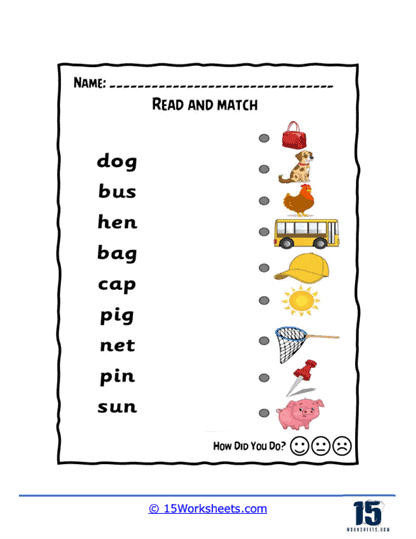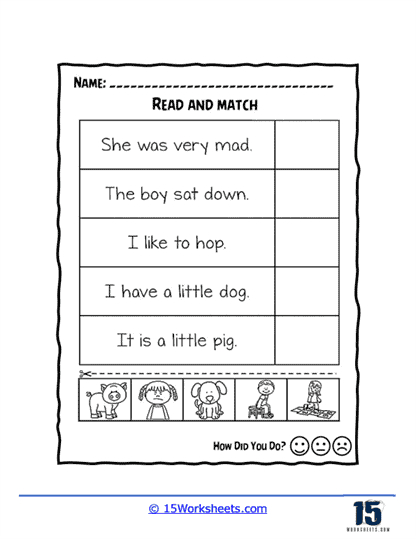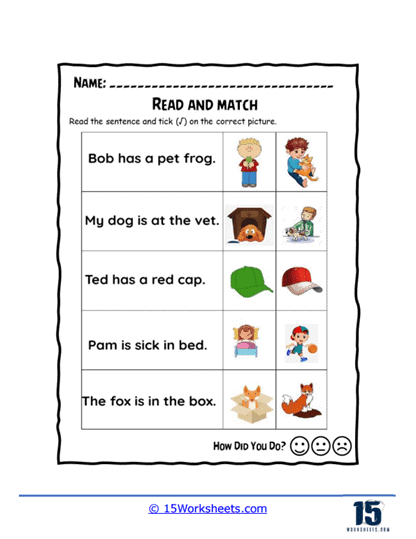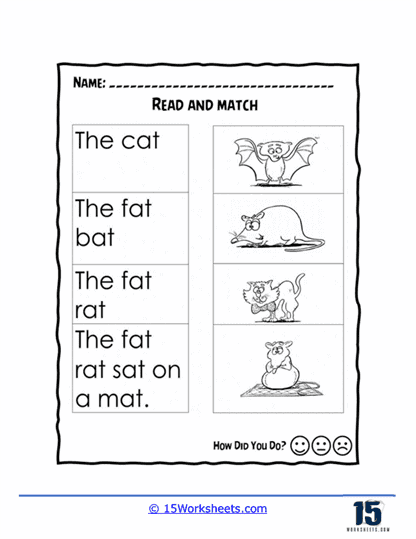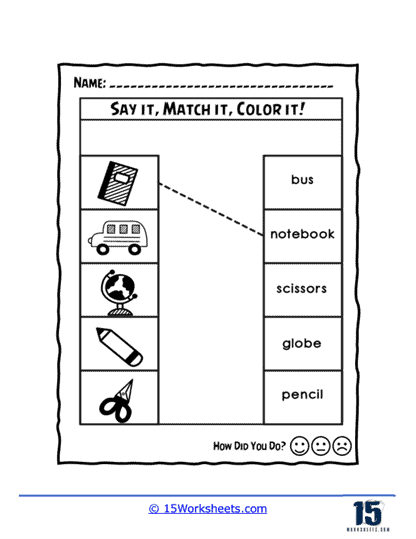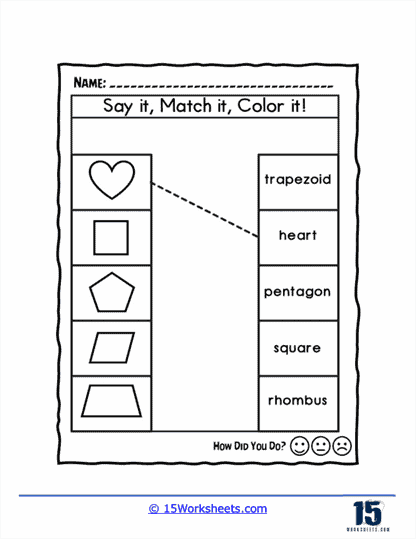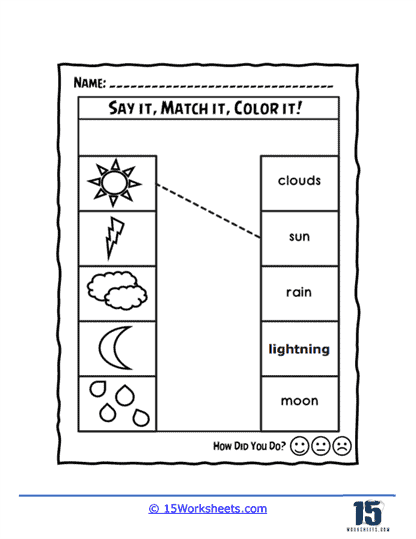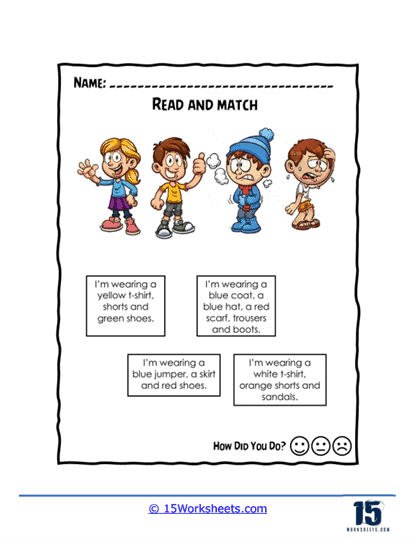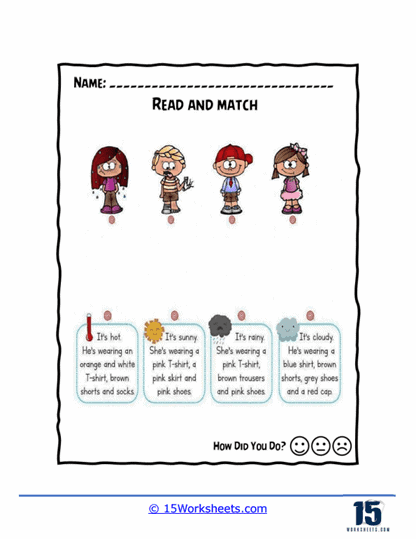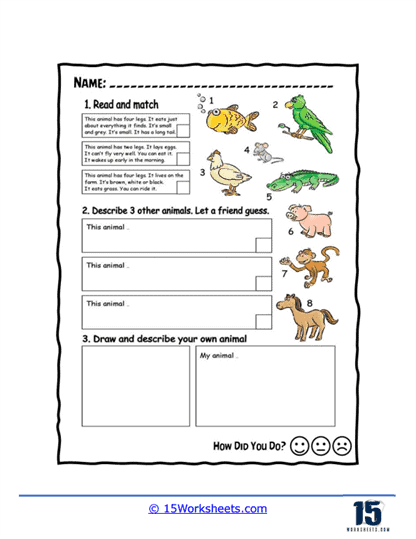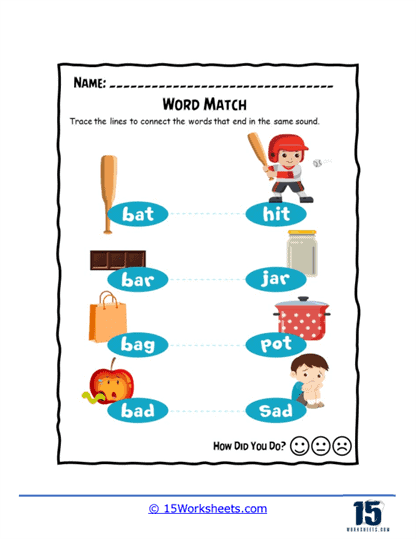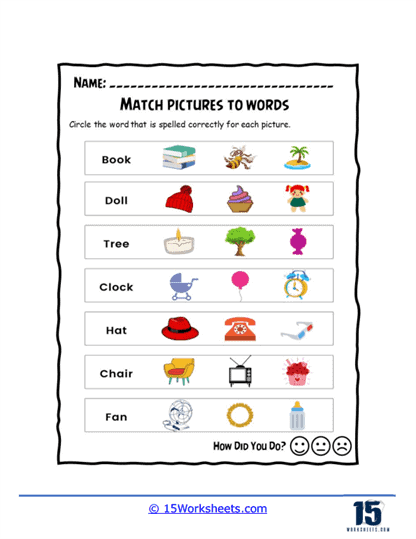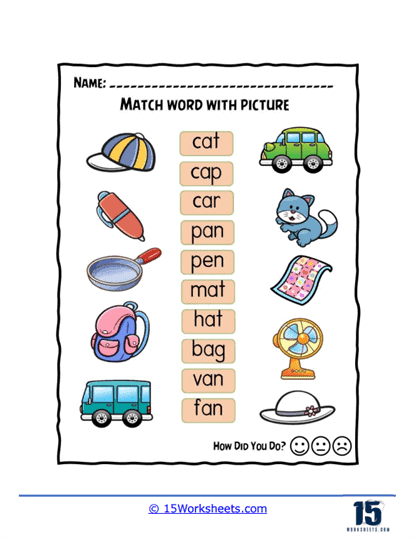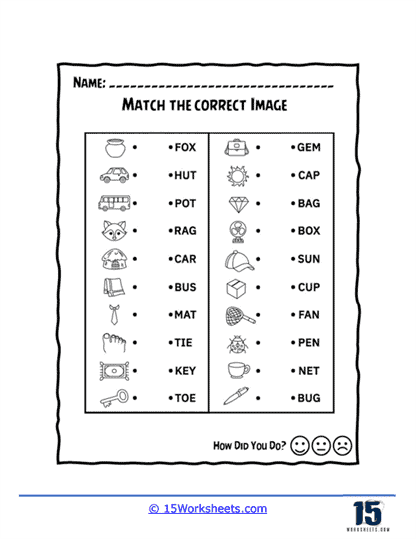Match Words to Pictures Worksheets
All About These 15 Worksheets
Preschool represents a remarkable and transformative stage in a child’s development, a time when their young minds are absorbing information at an incredible rate. During these early years, children experience rapid growth in language acquisition, problem-solving, and cognitive abilities. This period is essential for setting the foundation of lifelong learning, as the skills they develop now will shape their future academic success. As such, the importance of carefully curated educational experiences cannot be overstated. Activities that are thoughtfully designed to engage, inspire, and challenge young learners are key to nurturing their growing abilities.
At the heart of this developmental phase lies the crucial task of building language skills. Vocabulary development, in particular, is a cornerstone of early education. The more words a child understands and uses, the more effectively they can communicate, express their needs, and engage with the world around them. Strong vocabulary skills are directly linked to academic achievement later in life, especially in reading and writing. As children learn to associate words with meanings, objects, and actions, they begin to unlock the doors of comprehension, which is fundamental to all learning.
One of the most effective ways to encourage vocabulary growth in preschoolers is through interactive, hands-on activities. Traditional methods of teaching, while important, are often too rigid for young minds that learn best through play and exploration. This is where creative educational tools, such as Match Words to Pictures worksheets, become invaluable. These worksheets offer more than just a fun pastime; they provide a structured yet engaging way for children to build connections between words and the world they live in. By matching pictures to their corresponding words, preschoolers not only enhance their vocabulary but also develop important early literacy skills.
The process of word-picture association is a fundamental step in learning to read. When children link a word with an image, they are practicing the skill of decoding-a critical aspect of reading fluency. This process helps them understand that letters and words represent sounds and meanings. It fosters a deep cognitive connection between the visual and linguistic components of language, setting the stage for more complex reading skills in the future. These worksheets guide children through this process in a playful and dynamic way, allowing them to learn without feeling the pressure of formal instruction.
Using these worksheets encourages critical thinking. As children examine the pictures and search for the corresponding words, they are actively engaged in a problem-solving process. They must use their memory, reasoning, and analytical skills to make the correct associations. This type of cognitive challenge is essential for developing a child’s ability to think critically and make connections between different concepts. It also teaches persistence and attention to detail, as they must carefully consider their choices before making a decision.
Beyond vocabulary and literacy, the use of Match Words to Pictures worksheets also contributes to a child’s overall cognitive and emotional development. Completing these tasks gives children a sense of accomplishment, boosting their confidence in their ability to learn and succeed. This positive reinforcement is crucial at such a young age, as it helps build a love for learning that can last a lifetime. When children feel successful, they are more likely to take on new challenges and explore new concepts with enthusiasm.
What Are Match Words To Pictures Worksheets?
Match words to picture worksheets are designed to help children develop their reading, vocabulary, and language skills by associating words with their corresponding images. These worksheets will present children with a set of words or phrases and a corresponding set of pictures. The goal is for children to match each word with the correct picture that accurately represents its meaning.
Some common elements of these types of worksheets may include:
Vocabulary with Images – Children are provided with a list of vocabulary words and a set of images, and they need to match each word with the appropriate picture that illustrates its meaning.
Matching Sight Words with Images – These worksheets focus on sight words, which are common words that children should recognize by sight without needing to sound them out. Children match each sight word with its corresponding image.
Singulars with Their Plural Form – Children can practice identifying singular and plural nouns by matching words with images that represent the singular and plural forms of the nouns.
Match Synonyms or Antonyms – Worksheets may require children to match words with images representing synonyms or antonyms, helping them develop a deeper understanding of word relationships.
Match Homophones or Homonyms – Children can practice identifying words that sound the same but have different meanings (homophones) or words that have the same spelling but different meanings (homonyms) by matching them with corresponding images.
Matching Categories and Sorting – Children can match words with images representing categories, such as animals, fruits, or objects, helping them develop their organizational and classification skills.
This set of worksheets can be used in various settings, such as classrooms, therapy sessions, or at home, and can be adapted to suit different age groups and developmental levels. These worksheets help children improve their reading, vocabulary, and language skills by encouraging them to make connections between written words and their meanings as represented by images.
How to Match Words to Pictures
Matching words to pictures is an important skill that helps with reading comprehension, visual literacy, and critical thinking. Here are the steps to effectively match words to pictures:
- Read the word: Carefully read the word you need to match to a picture. If necessary, sound it out to ensure you understand its pronunciation.
- Understand the meaning: Make sure you know the meaning of the word. If you’re unsure, look it up in a dictionary or ask someone for clarification.
- Observe the pictures: Look at the available pictures, paying close attention to details such as objects, people, animals, colors, and background elements.
- Identify key elements: Identify the main element or theme of the word you are trying to match. For example, if the word is “apple,” look for a picture that prominently features an apple.
- Compare and contrast: If there are multiple pictures to choose from, compare and contrast them based on the key element or theme of the word. Eliminate pictures that do not relate to the word until you find the one that best represents it.
- Contextualize: Consider the context of the word and the picture. If the word has multiple meanings or interpretations, make sure the chosen picture accurately reflects the intended meaning.
- Double-check: Once you have found a picture that seems to match the word, read the word again and look at the picture to ensure they correspond accurately. Confirm that the main element or theme of the word is well-represented in the image.
By following these steps, you can effectively match words to pictures, improving your ability to understand the relationship between text and visual information. This skill is important for reading comprehension, communication, and critical thinking in various educational and professional contexts.

